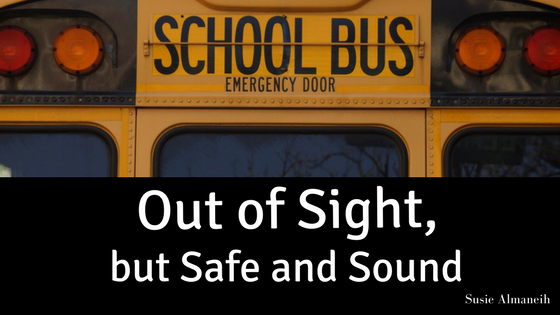Out of Sight, but Safe and Sound
It is easy for parents to underestimate the importance of travel to and from the bus stop. It may be close to home, but it is still important to teach kids how to be safe around traffic. A 2011 survey found that, in one day, more than 108,000 drivers had 85,279 vehicles illegally pass them. With little-to-no adult supervision and drivers ignoring traffic laws, you must ingrain these ideas in your child’s mind.
The Early Bird Catches the Worm
Children who rush to the bus may act with less care. Make sure to get your child out of the house with enough time for them to get to the bus stop at least 5 minutes early. This is especially important at the beginning of the year, as it can create an easy-to-follow routine that children will stick to until summer break.
Stranger Danger
All children are warned not to speak to strangers, and not to go anywhere near a vehicle they don’t know. However, bus stops are often unsupervised, and children may not remember your warnings. Remind them a few times throughout the year that they should stay away from people they don’t know, even if their friends think it’s okay. Peer pressure may not be common in this situation, but it is a possibility you should prepare for.
Look Both Ways
Children need to understand traffic laws as much as drivers. Why? Some drivers may be too distracted to notice a child on the road. Encourage your child to map out their route, including what side of the street they are walking on, whether or not there are sidewalks, and where exactly the bus will pick them up. Talk to them about blind corners and walking far away from the curb. That way, if they trip, they won’t fall into the road. And remind your child to always look both ways, especially on busy streets or places with low visibility.
No Running
Kids can be hyper, especially when they’re surrounded by other kids. While getting exercise can be great, explain to your child that running can lead to carelessness or accidents. As with the point above, drivers are not always reliable, and there is a possibility that your child could be hit if they are not careful. Plus, if they are not aware of their surroundings, they may miss other environmental hazards, such as groundhog holes or tree roots.
If I Can’t See You, You’re Not There
Bus drivers are aware that children do things they shouldn’t, but you should still make children aware of the importance of staying visible. If they drop something as they’re entering or leaving the bus, they should alert the bus driver so they can take appropriate steps to ensure each child’s safety. Likewise, your child should never cross behind the bus or too close to the front. Crossing behind means the bus driver cannot see them, and crossing too close to the front may leave them vulnerable to drivers who speed around the bus. Also, make sure your children are wearing bright clothing on days of low visibility to increase the chance of drivers spotting them.
Children are not always responsible for their safety, but teaching them these tips can help keep them safe. 815 students die annually on the way to and from school; don’t let your child join that statistic.



Comments
Post a Comment